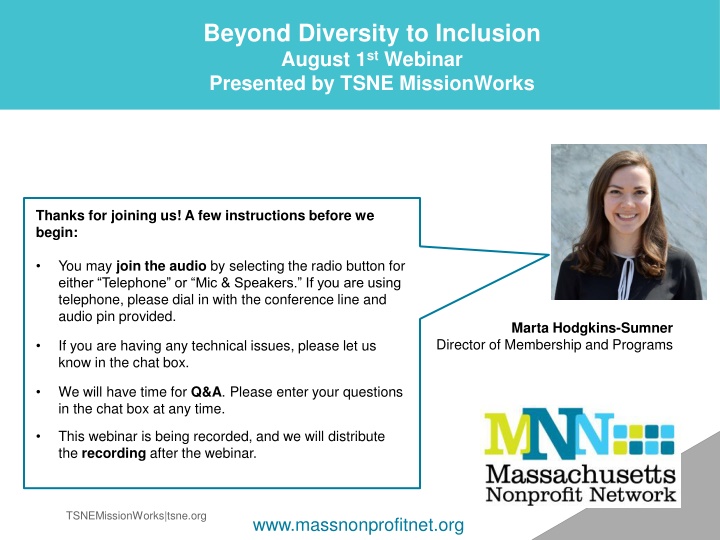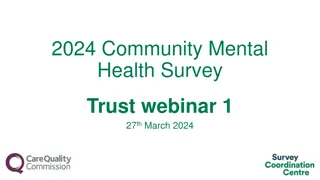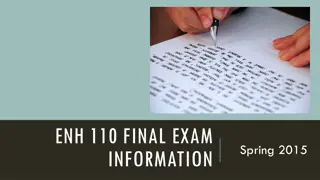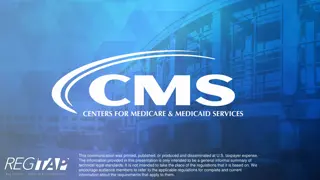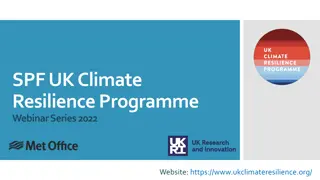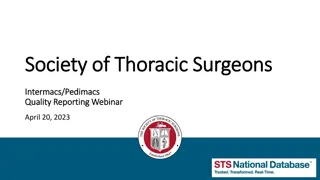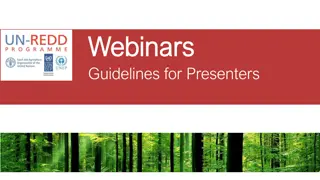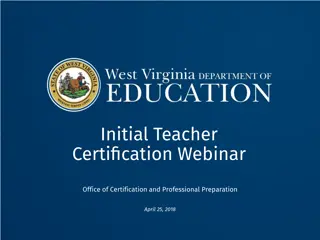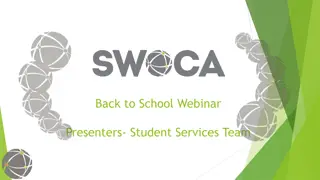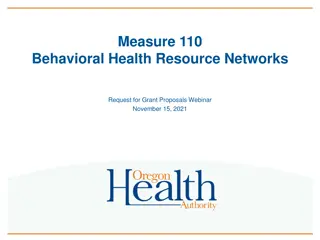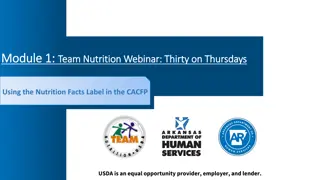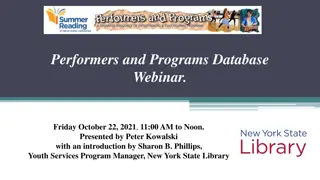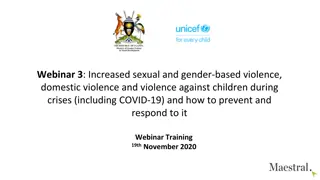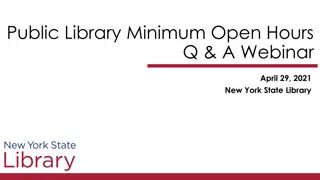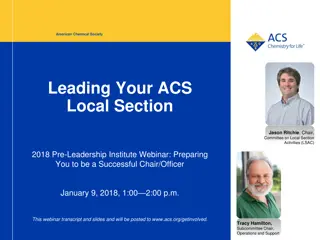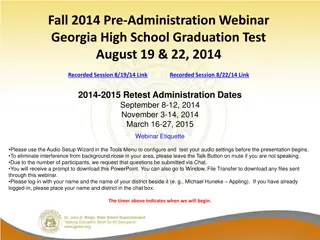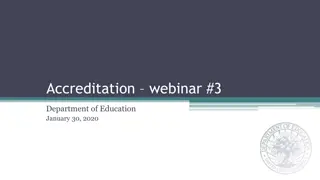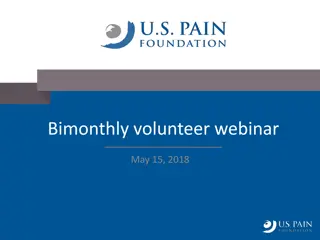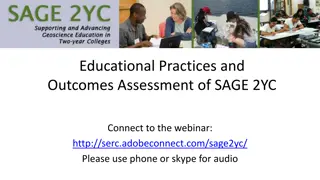Inclusive Practices for Building a Just Society
Join the TSNE MissionWorks webinar on moving from diversity to inclusion, presented by Marta Hodgkins-Sumner, Director of Membership and Programs. Explore common DEI concepts, understand racism's pervasive impact, and learn steps for inclusive work. Unpack the assumption of racism in US culture and delve into the four levels of racism. Enhance your knowledge of diversity, equity, and inclusion while aiming for a more just and democratic society.
Download Presentation

Please find below an Image/Link to download the presentation.
The content on the website is provided AS IS for your information and personal use only. It may not be sold, licensed, or shared on other websites without obtaining consent from the author.If you encounter any issues during the download, it is possible that the publisher has removed the file from their server.
You are allowed to download the files provided on this website for personal or commercial use, subject to the condition that they are used lawfully. All files are the property of their respective owners.
The content on the website is provided AS IS for your information and personal use only. It may not be sold, licensed, or shared on other websites without obtaining consent from the author.
E N D
Presentation Transcript
Beyond Diversity to Inclusion August 1st Webinar Presented by TSNE MissionWorks Thanks for joining us! A few instructions before we begin: You may join the audio by selecting the radio button for either Telephone or Mic & Speakers. If you are using telephone, please dial in with the conference line and audio pin provided. Marta Hodgkins-Sumner Director of Membership and Programs If you are having any technical issues, please let us know in the chat box. We will have time for Q&A. Please enter your questions in the chat box at any time. This webinar is being recorded, and we will distribute the recording after the webinar. TSNEMissionWorks|tsne.org www.massnonprofitnet.org
TSNE MissionWorks provides information and services to build the knowledge, power, and effectiveness of individuals, organizations, and groups that engage people in community and public life. The ultimate intention of our work is to create a more just and democratic society. Trina Jackson, Community Engagement Manager, has nearly 20 years of community- based experience as an organizer, facilitator, and strategist in the social justice movement.
Goals and Objectives Understand common language in Diversity, Equity and Inclusion (DEI) work Increased awareness of the ways racism pervades our society and organizations Better understanding of how inclusion is different from diversity Identify some steps for Inclusion work TSNEMissionWorks|tsne.org
A Basic Assumption In this webinar, we begin with the assumption that racism and white privilege are real and pervasive in US culture. TSNEMissionWorks|tsne.org
The Four Levels of Racism Norms and beliefs about what is good, right or beautiful. Ideological Institutional Control of resources and power, laws and policies Interpersonal What we do, our interactions with others Internalized Believing and acting out oppressive stereotypes about themselves and their group. TSNEMissionWorks|tsne.org
Common Language Diversity Inclusion TSNEMissionWorks|tsne.org
Diversity Individual Representational Transactional TSNEMissionWorks|tsne.org
Diversity TSNEMissionWorks|tsne.org
Diversity-focused questions How can we attract a more diverse pool of candidates? Number of outreach and recruitment activities (door knocking, house meetings, phone calls). Number of leaders participating on committees, boards, and other leadership positions. TSNEMissionWorks|tsne.org
Inclusion Collective Way of being Transformational TSNEMissionWorks|tsne.org
Inclusion TSNEMissionWorks|tsne.org
Inclusion-focused questions What barriers stand in the way of people with marginalized identities feeling a sense of welcome and belonging? What is their experience? What don t we realize about what we re doing that negatively impacts more racially diverse teams? What type of organizational culture do we want to create? How are we prepared to deal with resistance? TSNEMissionWorks|tsne.org
Diversity is being invited to the party. Inclusion is being asked to dance. TSNEMissionWorks|tsne.org
Organizational Culture The ways an organization conducts its work, treats staff, and the wider community. How much freedom is allowed in decision making, in developing new ideas, or in personal expression. How power and information flows through its hierarchy. How committed staff are towards collective objectives. TSNEMissionWorks|tsne.org
Dominant Culture Most powerful group in society. Receives the most support from major institutions and constitutes the major belief system. Social institutions in the society perpetuate the dominant culture and give it a degree of legitimacy that is not shared by other cultures. TSNEMissionWorks|tsne.org
White Supremacy White supremacy is a historically based, institutionally perpetuated system of exploitation and oppression of continents, nations and peoples of color by white peoples and nations of the European continent; for the purpose of maintaining and defending a system of wealth, power and privilege. TSNEMissionWorks|tsne.org
White Supremacy Culture within organizations Perfectionism Sense of Urgency Defensiveness Quantity over Quality Worship of the Written Word Only one right way Paternalism Either/Or Thinking Power Hoarding Fear of Open Conflict Individualism Progress = Bigger, More Objectivity Rights to Comfort TSNEMissionWorks|tsne.org
Iceberg Model TSNEMissionWorks|tsne.org
Culture > Strategy TSNEMissionWorks|tsne.org
Exploring Dimensions of Your Organization Big Picture Analysis How do we understand the issues we are addressing? Program Design How do we engage our constituents/participants in the design and implementation of the our programs and activities? Program Evaluation How do we engage our constituents/participants in defining success? Storytelling How are we interrupting unproductive narratives? TSNEMissionWorks|tsne.org
Exploring Dimensions of Your Organization Fundraising Who do we value as important donors to reach out to? Financial Resources Who has control and influence over how we use our resources? Organizational Structure To what extent does our structure reinforce hierarchies of value based on status rather than experience or expertise? Governance How does our governance structure reflect our organizational values? TSNEMissionWorks|tsne.org
Strategies to Build Inclusion Engage in deliberate collective self-reflection to monitor biases and stereotypes. Create opportunities for people to interact and develop new associations. Foster a collaborative, cooperative environment with staff sharing equal and equitable status and common goals Involve a cross-section of decision-makers. Different viewpoints and multiple perspectives can also help reduce implicit bias TSNEMissionWorks|tsne.org
Humanize the Impact Refrain from detachment on the lives of people and their experience Understanding oppression is not an intellectual exercise Take responsibility for your own learning Be aware of the privileges that you carry. TSNEMissionWorks|tsne.org
Questions? Not everything that is faced can be changed, but nothing can be changed until it is faced. - James Baldwin TSNEMissionWorks|tsne.org
